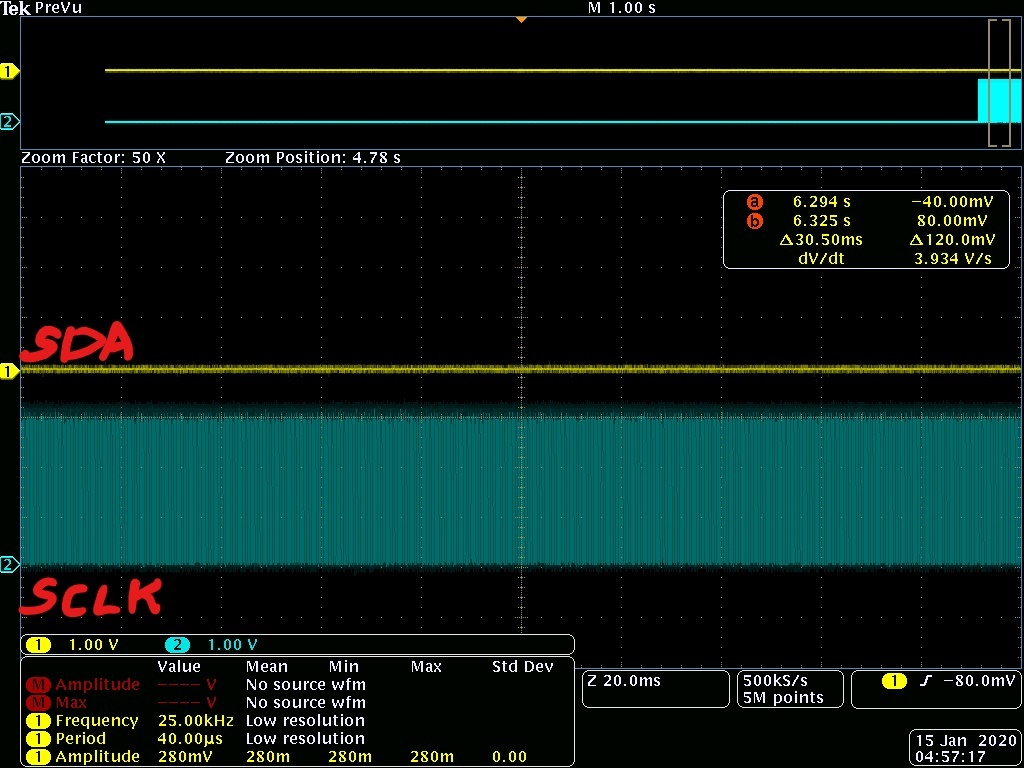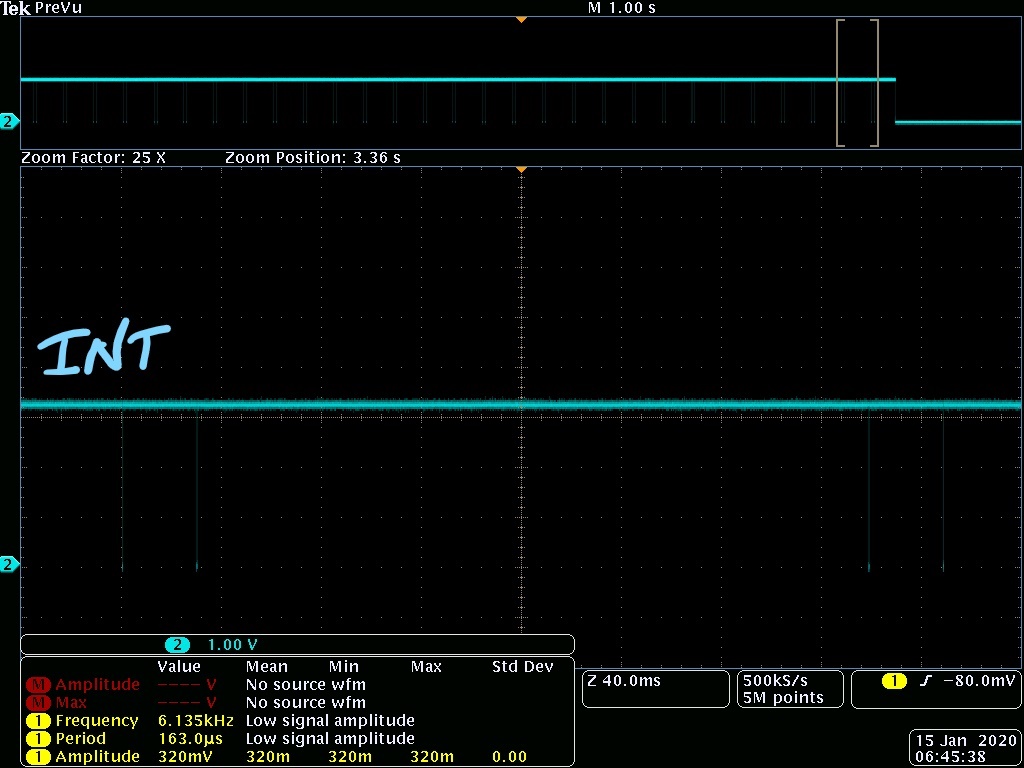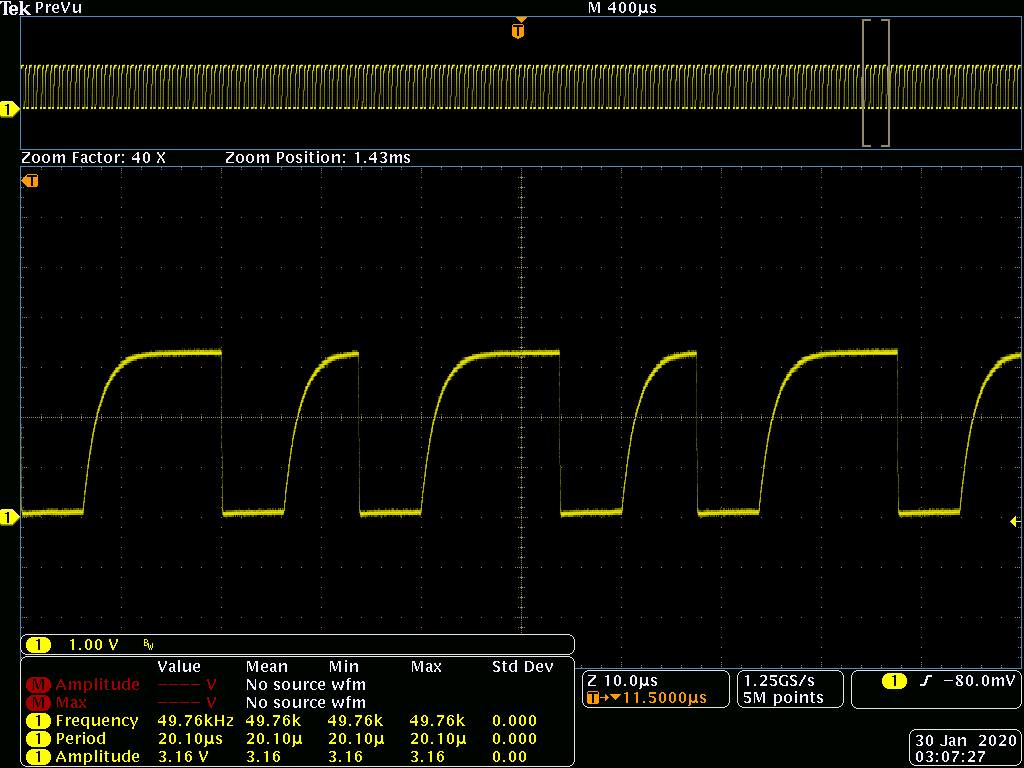The BQ24163 does not charge and below are the observations:
1. BQ24163 pulls the SDA lines low
2. BQ24163 has the SCL lines continuously clocked
Note: By design the SDA and SCL pin of BQ24163 is connected to the host controller and is pulled high externally. Isolated the SDA and SCL lines of BQ24163 from the host controller and observed that the SDA lines are pulled low at the output of BQ24163 and SCL is continuously clocked
3. The INT pin of BQ24163 reports sends two ~128us pulse every ~30ms and repeats this pattern every ~1s.
Note: Datasheet calls out a 128us pulse on INT pin as a fault pulse.
Can TI help on understanding why the BQ24163 is stuck in a state with the above mentioned observation?







